VOL. 1: MANUAL WINDING MODELS (1963-1988)


© 2023 Watchprint.com Sàrl, La Croix-sur-Lutry
All rights reserved. No part of this publication may be reproduced in any manner whatsoever.
The texts in this book are independent of Rolex SA. The watch models are illustrated for identification purposes only.
ISBN 978-2-940506-53-8
Publishing Managers: Fabrice Mugnier and Suzanne Wettstein
English proofreading and partial translation: Susan Jacquet, Transcribe
Printing: Daneels Graphic Group, Belgium
See our watch and jewelry-themed publications on our website, www.watchprint.com
4
5
CONTENTS Foreword 6 Message from the authors 8 1. INTRODUCTION 16 2. HISTORICAL MILESTONES 36 3. DAYTONA UNDER THE LOUPE 86 4. MODELS 194 5. APPENDIXES 278 Credits, Contributions & Acknowledgments 283
TABLE OF


INTRODUCTION
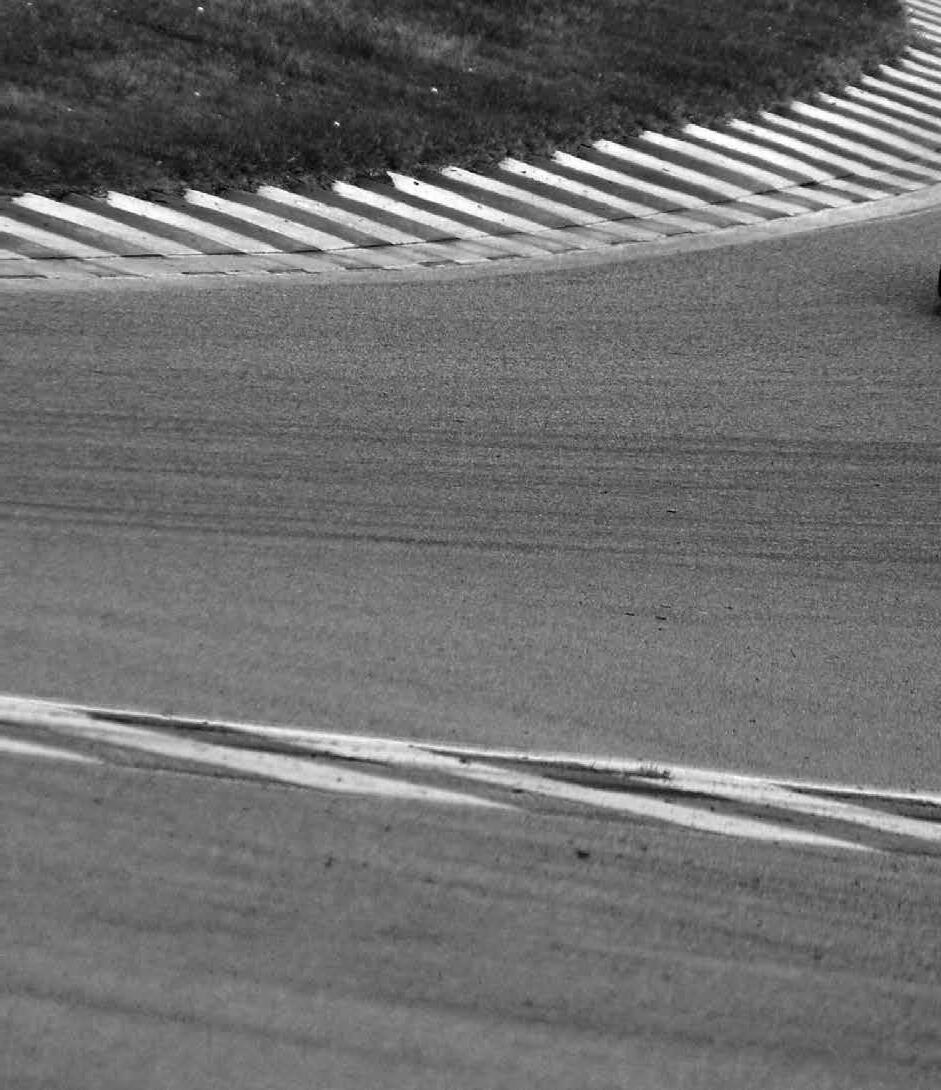
DAYTONA … a legendary name among watch aficionados, one that conjures up montages of speed, engines whirring dust, sound and most of all, glamour. The origin of the myth that is the Cosmograph Daytona is linked to a city in Florida, named Daytona, which was later renamed Daytona Beach.
From the 1900s to the 1950s, its beach was the site of many motorcycle and automobile races, thanks to its smooth and compact sand. It also became the playground for numerous land speed record attempts by the most prestigious drivers, such as Malcolm Campbell.
It was in 1959 that the Daytona 500 race was born. It took place on the newly built Daytona International Speedway – hence, a central start to the Cosmograph Daytona story.
ABOVE:
Sir Malcolm Campbell in his new Blue Bird V at Daytona Beach, Florida, 1935. He set a land speed record of 276.82 mph (445.5 km/h) with his supercar powered by a 2,300 hp, 36.7-liter Rolls-Royce V12 engine.

18
INTRODUCTION

19
Aerial view of the Daytona International Speedway in 1959, the year it opened.
PAUL NEWMAN AND DAYTONA
One cannot discuss the success and popularization of vintage watch collecting as a whole without acknowledging the impact Paul Newman has had in this world.
Starting from the middle of the 1960s, Rolex further expanded its catalog and commercialized Cosmographs with so-called “exotic” dials. These dials are immediately recognizable due to the Art Deco-style numerals found in the subsidiary registers. Moreover, these dials feature 3D construction: the main portion is higher than the registers and the contrasting minutes track is delimited by a step.
Today, these exotic dials are synonymous with philanthropic actor and motor sportsman Paul Newman – and watches with such dials are now commonly called “Paul Newman” Daytonas.
In fact, during the filming of Winning , Paul Newman fell in love with racing and became a true motorsport enthusiast. His wife, Joanne Woodward, consequently gifted him a sports chronograph, an exotic Daytona variant (reference 6239), with a personalized and now famous inscription on the caseback:
22
DRIVE CAREFULLY ME
OPPOSITE PAGE:
INTRODUCTION
Paul Newman’s Paul Newman.

Paul Newman and his exotic-dial Daytona, reference 6239.
When trying to understand the vintage Daytona collection, it is imperative to recognize the one watch that arguably gave birth to vintage Rolex collecting as a whole and inspired many a collector today. It was only after Paul Newman was pictured wearing his watch that collectors’ interest in the Daytona really kicked off.
Exotic dials were indeed not particularly commercially successful at the time of production and were often switched out at retailers; later, the opposite happened.
Paul Newman’s first Daytona was likely to have been originally purchased in the early 1970s at Tiffany & Co. in New York, as an inventory number possibly engraved by the luxury retailer is found on the underside of the left lug – a usual practice by the jeweller.
Paul Newman really loved his watch. He kept it for around 15 years and wore it in numerous situations such as racing, parties, charity gala fundraising, photo shoots, film directing and even during the Cannes Film Festival.
In 1984, Paul Newman gifted his Daytona to his daughter Nell Newman’s then-boyfriend, James Cox, who, 33 years later, sold it with proceeds benefiting the Nell Newman Foundation and Newman’s Own Foundation, in support of Paul Newman’s philanthropic values.
This Daytona made history in the Winning Icons New York Auction by Phillips in Association with Bacs & Russo in October 2017, netting $17.8 million – a then world-record price for any wristwatch.
24
OPPOSITE PAGE:
INTRODUCTION

This chapter identifies the milestones that have shaped the Cosmograph Daytona as we know it today.
From the birth of Hans Wilsdorf to the development of the chronograph movement, Oyster case and crown: the Cosmograph Daytona was not conceived in a creative vacuum, but represents the culmination of Rolex’s efforts in technology, combined with world events.

HISTORICAL MILESTONES

FIRST CERTIFICATE OF CHRONOMETRIC PRECISION
By 1910, Rolex had already created a wristwatch designed to pass chronometer testing at the Official Watch Rating Center in Bienne, Switzerland. Soon after, a Rolex wristwatch was awarded the Class A certificate at Kew Observatory in London. At the time, such an honor was reserved mainly for marine chronometers and to achieve recognition of this kind for a small wristwatch was an incredible feat. This achievement would be an overarching standard for all Rolexes to come, with chronometric precision and excellence in wristwatches being one of Hans Wilsdorf’s most important goals.
The first milestone – precision – had thus been reached.
Hans Wilsdorf was indeed a visionary when he said: “My personal opinion... is that pocket watches will almost completely disappear and that wristwatches will replace them definitively! I am not mistaken in this opinion and you will see that I am right.”
No truer words could have been said, and following World War II, wristwatches had almost become de rigueur, with pocket watches becoming more and more niche.
44 HISTORICAL MILESTONES 1910
In 1910, the first certificate of chronometric precision for a wristwatch was granted to a Rolex, delivered by the official Official Watch Rating Centre (Bureaux Officiels Communaux pour l’Observation des Montres)

in Bienne, Switzerland. In 1914, Rolex received a “Class A Certificate of Precision” from the National Physical Laboratory (GB) at Kew Observatory, one of the oldest metrology institutes in the world.

45
The launch of reference 3525 marked an important milestone for the brand as it was the very first chronograph wristwatch with two counters to be housed in an Oyster case with a waterproof screwdown caseback along with a screw-down crown. It was available in pink gold, yellow gold, stainless steel or steel and gold combinations. The model is a benchmark reference, as it represents one of the firm’s most important technological advancements and set the design codes of certain subsequent models.
However, one might argue that references 6034, 6234 and 6238 are the true ancestors of the Cosmograph Daytona we know so well today. These models carry all the design codes of the modern Rolex chronograph such as a metal bezel, protruding chronograph pushers, tonneau-shaped case, screw-down crown and screw-down caseback.
Production of reference 6234 was extremely limited. Since its launch in 1955, approximately 2,300 examples were produced in stainless steel. In contrast, it is recognized that less than 150 examples were cased in 14K or 18K yellow gold. Production of this reference ceased after approximately six years of manufacture and was replaced by reference 6238 .
Reference 6238 most resembles the first Cosmograph Daytona, reference 6239, hence its “PreDaytona” nickname. While the tachymeter scale is still printed on the dial, it is notably fitted with the Valjoux Caliber 72B, which would later also be fitted on its successor reference 6239. Cased in 14K or 18K yellow gold or steel, this model was fitted with various types of dials such as black or silvered, featuring lacquered, galvanic or grené finishes along with simple or multiple measurement scales (such as pulsometer, tachymeter and telemeter).
72
HISTORICAL MILESTONES




73
FROM LEFT TO RIGHT:
A reference 6034 in stainless steel with “tropical” dial and a reference 6238 “Pre-Daytona” in stainless steel with black dial.
FROM LEFT TO RIGHT:
A reference 3330 in stainless steel with luminous dial and a reference 3525 “Barilotto” in stainless steel and pink gold with an appealing salmon dial.
Throughout the history of this model, Rolex has constantly developed its components in order to improve and diversify, based on its guiding principle summed up as the “pursuit of excellence” guideline. That is why a detailed study of the Cosmograph Daytona must be based on an individual analysis of all its components. This chapter presents a broad approach, corresponding to the most common component configurations, in order to establish a representative overview. Some configurations not described here may nonetheless be legitimate (see Disclaimer p. 13).
Within this contet it is useful to refer to the Rolex “R 20” Catalog, an internal catalog that Rolex sent to retailers and partners each year to classify and assign parts. This was particularly useful during servicing as watchmakers needed to know which components to use. Today, it is very useful for scholars to refer to this book in the interests of “period correctness” and we will thus do so. Furthermore, collectors and scholars gave nicknames or classification types to models or parts and here it is important to understand the usage of the “Mark (Mk)” classification, which designates an evolution in the versions of a part or a product. As an example, Mk 1 is usually older than Mk 2. Moreover, this nomenclature and the nicknames are in English or Italian and the latter are not translated here in order to keep a certain consistency among collectors worldwide. Due to parts being exchanged, as discussed in the opening pages, there may be omissions or inaccuracies when cataloging the many parts and correlating them with dates and/or serial numbers.

DAYTONA UNDER THE LOUPE

DAYTONA MODELS – GENEALOGICAL TREE

Cal. 72B / 722 / 722-1
Cal. 727
6239 6240 6241
6262 6264 6265
6263
88
6269/ 6970
PUMP PUSHER DAYTONAS
SCREW-DOWN PUSHER DAYTONAS
Steel bezel
Black bezel
Steel bezel
Black bezel
UNDER THE LOUPE
Diamonds bezel
DAYTONA MODELS – TIMELINE

89 1963 6239 1964 1965 6240 1966 6241 1967 1968 1969 6263 1970 6262 6264 6265 1971 1972 1973 1974 ... 1984 6269 6270 ... 1987 1988
... ...
DIALS
STEEL DAYTONA DIALS ROLEX OYSTER COSMOGRAPH (ROC)
With the introduction of screw-down pushers, first on reference 6240, then on references 6263 and 6265, Rolex added the name “Oyster” to its Cosmograph dials. One of the two possible text configurations was “Rolex Oyster Cosmograph”, applied to the upper part of the dial.
This designation, without the word “Daytona”, was produced in several variants, with different text positions on the dial depending on the production batch. It was during this period that the Sigma symbol appeared around the “T Swiss T” inscription (see p.120): these models were nicknamed “High ROC Sigma” and “Low ROC Sigma”. The possible combinations of 1) dial color, 2) position of the “ROC” text and 3) absence or presence of three different Sigma variants explain the existence of at least 11 different dials.
“Low ROC” dials are the most rarely observed, mostly between 1972 and 1974. Finally, a very rare “Low ROC” dial variant, nicknamed “Big Eye”, has slightly larger subsidiary registers, with the one at 6 o’clock touching the “Swiss” text.
This dial configuration was used for less than a decade, from approximately 1971 to 1977, with a few examples popping up earlier on reference 6240.
134 UNDER THE LOUPE
The model designation can be high (black dial, left) or low (black dial, right). Some very rare variants have larger registers (silvered dial, left) compared to that of the classic version (silvered dial, right) and are nicknamed “Big Eye”.





135
METAL BEZELS





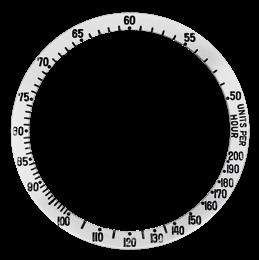


168 UNDER THE LOUPE
Steel 300 Mk 1
Steel 300 Mk 2
Steel / gold 200 Mk 1
Steel / gold 200 Mk 2
Steel / gold 200 Mk 3
ACRYLIC BEZELS

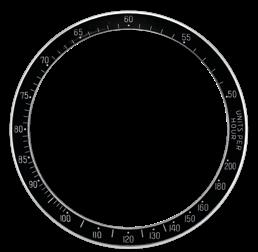


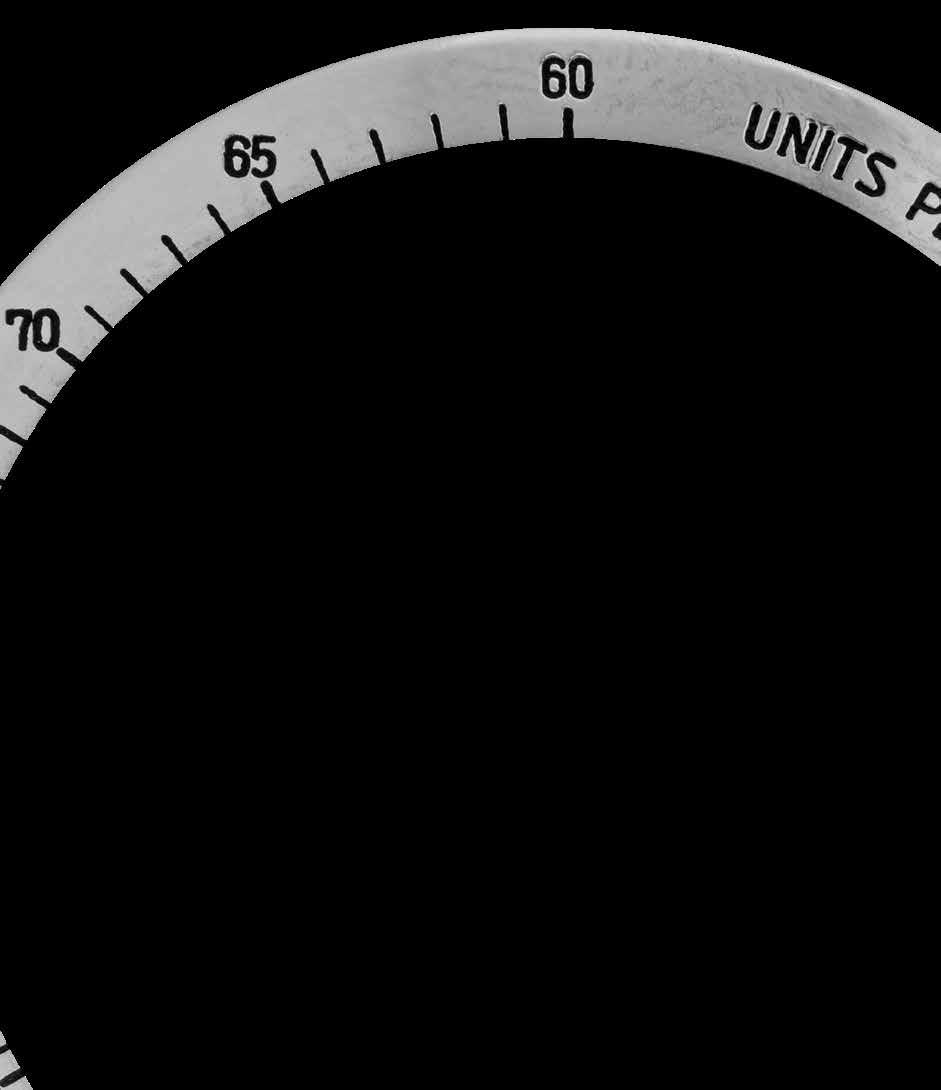
169
Black 200 Mk 1
Black 200 Mk 3
Black 200 Service
Black 200 Mk 2
CASEBACKS
GOLD CASEBACKS
Both 14K and 18K casebacks are identical in shape, the only difference being the gold engravings inside. A different gold alloy can result in a different hue, making 14K casebacks more “bronze” in color.
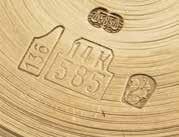
14K model markings
• 14K 0,585 (or 585 in late production). This corresponds to the number of carats and the ratio of pure gold.
• A squirrel, which is the Swiss hallmark for 14K gold.
• The Poinçon de Maître (maker’s mark) indicating the case manufacturer, in this instance a hammer head with the number 136, corresponding to C.R. Spillmann.
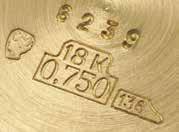
18K model markings
• 18K 0,750 (or 750 in late production): this corresponds to the number of carats and the ratio of pure gold.
• The head of Helvetia (the female personification of the nation), which is the Swiss hallmark for 18K gold.
• Maker’s mark 136.
176 UNDER THE LOUPE
Engraving on a 14K caseback.
Engraving on a 18K caseback.
Similar to steel versions, special order examples bear the serial number inside the caseback and may have a special engraving.


An example would be watches ordered by the Sultanate of Oman, displaying the Khanjar and also the name of the British retailer Asprey on the caseback.

177
Standard caseback from a gold Rolex Daytona.
The Sultanate of Oman used to place orders through the famed retailer Asprey, which had the privilege of engraving its name on the case.
This chapter presents a rich gallery of the most representative manual winding Daytonas from 1963 to 1988, although it is not exhaustive given the near-infinite number of variants.

The following pages show what the authors believe are top-quality, iconic examples displaying the breadth and variety of the manual winding Cosmograph Daytona.
These models are classified as follows:
• Steel classic Cosmograph Daytona
• Yellow gold classic Cosmograph Daytona
• Paul Newman Cosmograph Daytona
• Special Cosmograph Daytona.
MODELS

6262 BLUE DAYTONA 1970
The dial of this reference 6262 features a “Blue Daytona” logo, i.e. the originally white “Daytona” has turned light blue. Most black dials of this type have this singular defect. The bezel is the first steel version, with the tachymeter scale starting at 200 (Steel 200 Mk 1). Note the second-generation case with the bulge under the crown.

206 STEEL MODELS
1971 6262 BLACK DAYTONA
This reference 6262 “Black Daytona” displays stunning brown “tropical” registers, resulting from a chemical process affecting the black paint over time. The tone is a mix between orange and brown, earning it a distinctive name: “Terra di Siena”. Like the previous example, the bezel is a Steel 200 Mk 1 and the case is a Mk 2 with protrusion below the crown.

207
6241 14K JUMBO DAYTONA 1966
To our knowledge, the first Daytonas made in gold were reference 6241. Furthermore, the gold “Jumbo Daytona” dials were only under this reference, which makes it one of the rarest variants of a yellow gold Daytona, with no more than a dozen or so of examples known in this configuration. Note the white script in the subsidiary counters, compared to most of the subsequent dials which feature gilt script.

228 YELLOW GOLD MODELS
6264 14K CHERRY DAYTONA 1971
This example of reference 6264 in 14K gold is noteworthy due to the red “Daytona” text found on top of the subsidiary register at 6 o’clock. Only a handful of these particuarly rare reference 6264s are known to exist in this configuration.
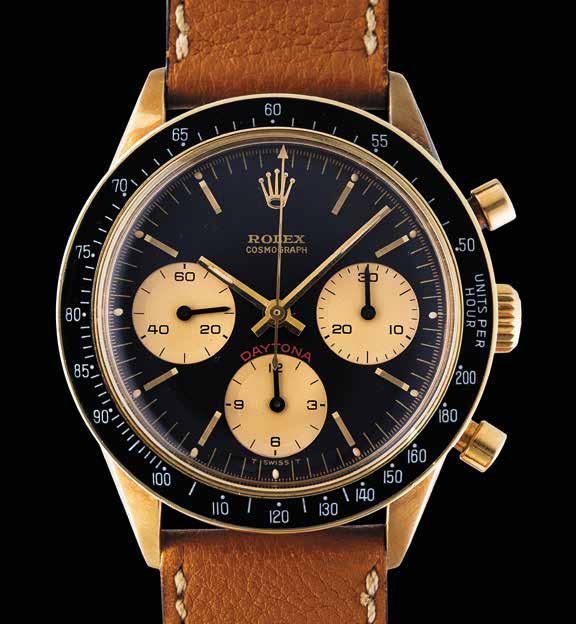
229
6263 PAUL NEWMAN OYSTER SOTTO
1969
This reference 6263 is one of the most sought-after Daytonas. It is nicknamed “Oyster Sotto” by collectors. The example shown is an “Mk 1”, whose dial letters are less serified than on the Mk 2, in particular the leg of the “R” for “ROLEX”. In addition, the central stroke of the ROLEX “E” is shorter. This watch also features the first pusher and bezel variants. The authors have identified fewer than 20 “Oyster Sotto Mk 1” models.

246 PAUL NEWMAN MODELS
6263 PAUL NEWMAN ROC MK 1
1969
Sold at the retailer Ricciardi (the retailer’s numbers are visible on the back of the lug), this watch is a reference 6263 “ROC” Mk 1, the first variant of the “Paul Newman Panda”. Other correct features are the Mk 0 brass pushers and Mk 1 bezel. This Mk 1 version is as rare as the “Oyster Sotto” Mk 1 on the preceding page.

247
In addition to Cosmographs bearing the “Khanjar” emblem, the Sultanate of Oman also ordered a number of pieces with a Qaboos red signature on the dial (see details on p.78-79). This version is even rarer than the “Khanjar” and only a handful of such Daytonas (both gold and steel versions) have been identified so far.

274 SPECIAL MODELS
1973 6265 18K RED QABOOS
This reference 6265, also ordered by the Sultanate of Oman via Asprey, is a little more recent than the previous ones. The addition of the Khanjar in the subsidiary register at 6 o’clock meant there was no need to modify the dial accordingly, unlike the versions with the Khanjar at 12 o’clock. This example is preserved in exceptional condition and the original sticker still appears on the caseback.

275 1980 6265 18K GOLDEN KHANJAR
APPENDIXES
ROLEX DAYTONA – DIAL LEXICON
ROLEX COSMOGRAPH
ROLEX COSMOGRAPH DAYTONA ROLEX COSMOGRAPH
ROLEX COSMOGRAPH OYSTER
ROLEX OYSTER COSMOGRAPH
ROLEX OYSTER COSMOGRAPH DAYTONA
ROLEX OYSTER
SUPERLATIVE CHRONOMETER OFFICIALLY CERTIFIED COSMOGRAPH
ROLEX OYSTER SUPERLATIVE CHRONOMETER OFFICIALLY CERTIFIED
COSMOGRAPH
(Non exhaustive)
280
DAYTONA
RCO
ROC ROC-D
RO-SO-C ROSO-C
ROLEX DAYTONA – DIAL LEXICON
NICKNAME DESCRIPTION
Albino Plain white or silver-colored dial.
Big Eye Dial with oversized counters.
Big Red Dial of ref. 6263/5 where Daytona is in large red script above the counter at 6 o’clock.
Black Daytona Dial script on pump pusher Daytonas where Curved Daytona is printed in black.
Blue Daytona Script on pump pusher Daytonas where Curved Daytona has turned from white to light blue.
Cherry Daytona Dial script on pump pusher Daytonas where Curved Daytona is in red.
Curved Daytona Dial script where “Daytona” is curved and above the counter at 6 o’clock.
Double Swiss Early dial of ref. 6239 with two Swiss scripts (second is hidden under the rehaut).
Double Swiss Underline Early dial of ref. 6239 with a line below Cosmograph and 2x the Swiss script.
Floating Big Red Dial of ref. 6263/5 where Daytona in large red script floats above counter.
Floating Small Daytona Similar to “Small Daytona” with a floating Daytona script.
High ROC High placement of script “Rolex Oyster Cosmograph”.
Jumbo Daytona Dial script where “Daytona” is large, usually seen on ref. 6239, 6240 and 6241. (= Big Logo)
Low ROC Low placement of script “Rolex Oyster Cosmograph”.
OCC Short for Officially Certified Chronometer seen on some gold Daytonas.
Oyster Split Dial of early gold ref 6263/5 with a gap in the OCC designation.
PN John Player Special Black Paul Newman dial on gold Cosmographs, also known as “JPS”.
PN Lemon Paul Newman dial on gold refs 6241, 6264, counters with white graphics.
PN Musketeer Paul Newman dials where snailing of the counters covers only 2/3 of the surfaces.
PN Oyster Sotto (RCO) Black dialed Paul Newman ref. 6263 with “ Oyster” below “Rolex Cosmograph”.
PN Red or White Scale Outer scale of register on a Paul Newman dial.
PN ROC Also known as “Panda”, a white dialed Paul Newman ref. 6263 or 6265.
RCO Script configuration representing “Rolex Cosmograph Oyster”.
ROC Script configuration representing “Rolex Oyster Cosmograph”.
ROC Three Liner Dial of gold ref. 6263 or 6265 with 3 lines of text (no OCC designation).
Sigma dial Dial with the APRIOR logo σ (resembling the sigma letter) flanking Swiss.
Sing-a-Song The early sloped “T Swiss T” on Paul Newman dials.
Small Daytona Early ref. 6239 dial with the script Daytona in small size below Cosmograph.
(Non exhaustive)
281
COSMOGRAPH DAYTONA… a legendary name among watch aficionados, one that conjures up montages of speed, engines and sound, but also synonymous with prestige and admiration. The origin of the myth is linked to a city in Florida, named Daytona Beach, famous for its seaside motorcycle and car races. In 1959, the Daytona 500 race was born and three years later, Rolex was appointed official timekeeper of the Daytona International Speedway – heralding the story of the legendary Cosmograph Daytona.
The chronograph complication and the history of Rolex have always been inextricably linked. Rolex’s first foray into measuring time began already in the 1930s with the Manufacture’s very first Oyster chronograph model. In 1963, Rolex launched the Cosmograph Daytona, a sports chronograph that has perpetually evolved ever since, reflecting the spirit of the brand that has consistently striven to improve existing technology, always pushing the boundaries of technical feasibility.
The history and diversity of this chronograph is such that two (independent) volumes have been devoted to it. This first volume, dedicated to hand-wound Daytonas produced between 1963 and 1988, is a celebration of its illustrious history shaped by numerous individuals – although if we were to single out just one, it would definitely be Paul Newman.

ISBN 978-2-940506-53-8



























































